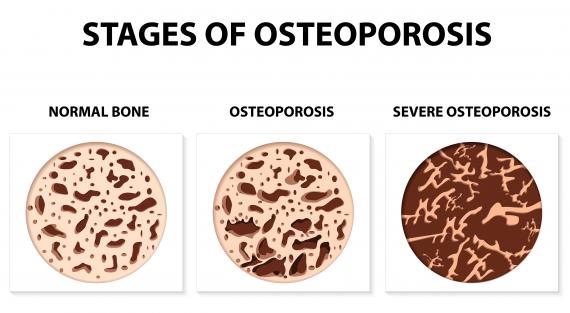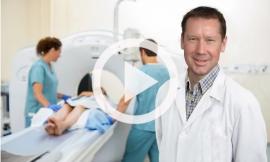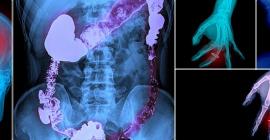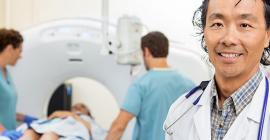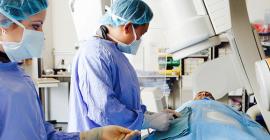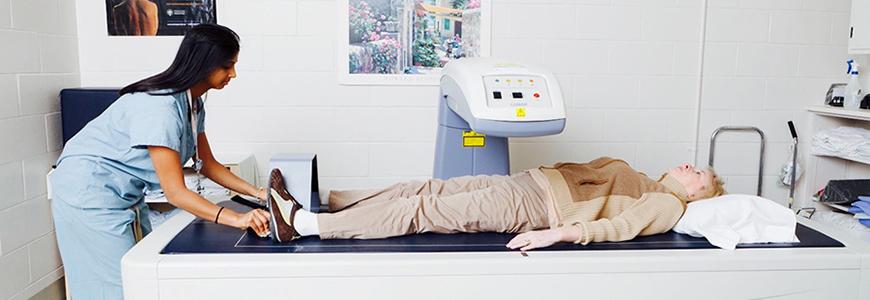
Bone Mineral Densitometry
Osteoporosis is a highly debilitating disease affecting more than half a million Ontarians, both men and women. Fractures from osteoporosis are more common than heart attack, stroke and breast cancer combined.
Bone Mineral Densitometry is a non-invasive specially developed x-ray exam used by radiologists who are medical doctors, to assess the strength of your bones by measuring the mineral content of your spine and hips. As we grow older our bones normally loose some of their Calcium. Loss of Calcium weakens our bones and makes us more prone to fractures. Mild loss is referred to as Low Bone Mass. More severe loss is known as Osteoporosis.

The established standard in use today is Dual-energy X-ray Absorptiometry, or DEXA, which is considered the “Gold Standard: for BMD Measurement. It measures “central” or “axial” sites, which are the spine and hip.
What Does the Equipment Look Like?
- DXA machines consist of a padded table with a scanning arm attached to one side. This arm moves up and down the patient positioned on their back on the table, scanning the hip and lower spine.
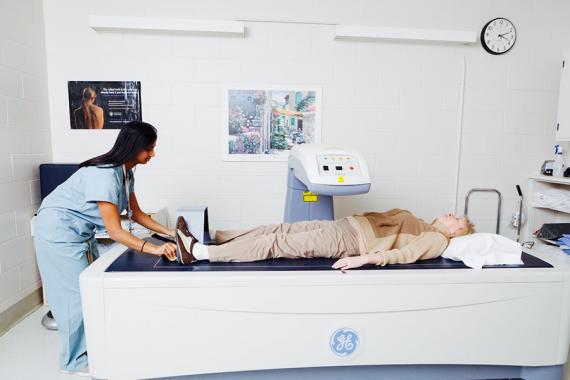
How is the exam performed?
- Technologists who are specially trained in Bone Mineral Densitometry perform the BMD exam carefully positioning patients for each measurement.
- Measurements are most commonly taken of your lower spine and both hips.
- The exam is preformed with the patients comfortably lying down on their backs on the DEXA machine table.
- During the spinal portion of the examination a patients legs will be raised and resting on a soft foam cushion, which straightens the spine.
- When examining the hips the patient’s feet will be placed in a brace to rotate the hips inward. The scanner slowly passes above the areas of interest as it collects information, which will be used to make a diagnosis.
- The technologists prepare a report for the radiologist, a medical doctor specially trained in BMD, who reviews the patient scans and report and makes a diagnosis and prepares a detailed report with recommendations for the referring physician.
- The exam usually lasts about 15 minutes. Your Doctor will usually have the results for you in a few days.
How should I prepare for a DEXA scan?
- You may eat normally on the day of the test. If you are taking Calcium supplements avoid taking these for 24 hours prior to the exam.
- Wear loose comfortable clothing without buttons, zippers or snaps if possible.
- Inform your Doctor and the Technologist if you have received Barium or any other contrast media or radioisotope during a CT or other scan in the last 10-14 days. If so you may have to reschedule for a later time.
- As always inform your Doctor and the Technologist if there is a chance you may be pregnant.
- You will be asked to fill out a brief form (Bone Densitometry Screening Form) prior to having your procedure done.
Who is at risk for Osteoporosis?
- Women are most at risk. 1 in 3 women will suffer from an osteoporosis in their lifetime.
- This is especially true in post-menopausal women and more so in Caucasian and Asian women then in women of African-American or Hispanic descent.
- Various medical conditions as well as use of certain medications can also speed up bone loss.
- Men can also develop Osteoporosis. 1 and 5 men will suffer from an osteoporosis in thei lifetime
- 1.5 million Canadians 40 years of age or older (10%) reported having been diagnosed with osteoporosis.
- 80% of all fractures in people 50+ are cause by osteoporosis.
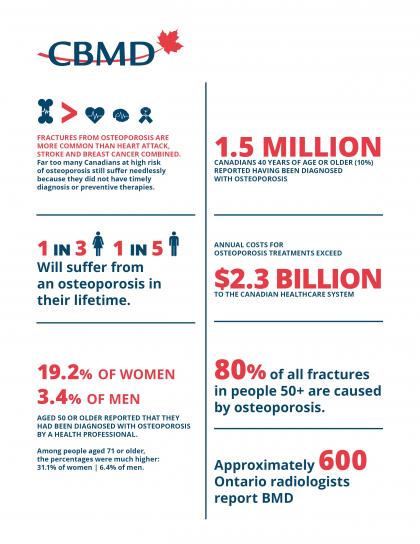
What is Bone Loss?
- As we grow older our bones normally loose some of their Calcium.
- Loss of Calcium weakens our bones and makes us more prone to fractures.
- Mild loss is referred to as Low Bone Mass. More severe loss is known as Osteoporosis.
